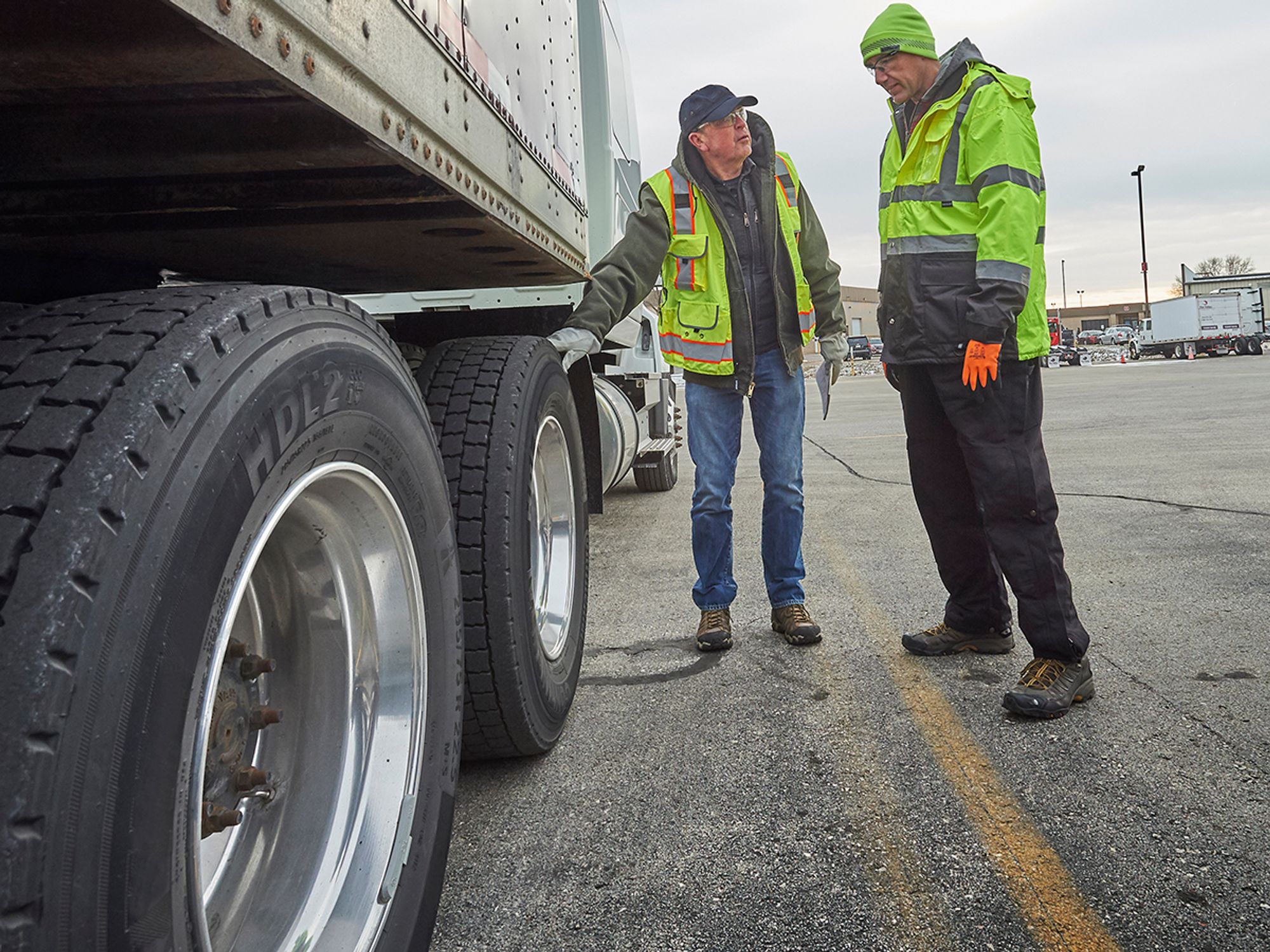Tires

- When spec’ing tires, carriers should consider inflation, size, and type.
Tires should not be forgotten when spec’ing equipment. Fleets are increasingly spec’ing radial tires; they stand up better and give more tread life for the money. But one aspect of tires that managers often miss is that bias-ply tires require significantly more horsepower to maintain 55 mph than steel-belt radials. Using more horsepower translates directly into fuel consumption, so all tires should be spec’d closely.
Another fuel mileage problem that can arise with tires is under-inflation. Under-inflated tires can lose 1.5-3 percent of a vehicle’s fuel mileage. Because of the direct effect that tire inflation has on fuel economy (and the operational cost of purchasing and repairing tires), many fleets have gone to, or experimented with, electronic tire pressure monitoring and automatic inflation systems. These after-market options continually monitor tire inflation and notify the driver when tire pressure is low. In the case of the automatic inflation systems, the system will bring the tire back up to pressure after notifying the driver. Regular inflation checks should be provided in any motor carrier’s inspection system.
Tire size and type are also critical decisions. Tire size matters because a vehicle’s overall road speed performance (and therefore the revolutions per minute [RPM] requirements) changes with the diameter and circumference of its tires. If the driveline is not matched to the tire size, the vehicle may be operating at a higher than necessary RPM just to maintain the cruising speed. The reverse is also true. If the tires are too big for the vehicles, the vehicle may be running at too low of an RPM when cruising, which can lead to other problems.
Tread type also impacts fuel economy because a tire’s tread helps determine rolling resistance. For example, a deep lug drive tire will improve traction, but will also lower fuel economy by two to four percent.
With improvements in tread designs, casting designs, rubber compounds, and friction reduction, definite and significant savings can be realized by spec’ing the right tires for a carrier’s equipment.
